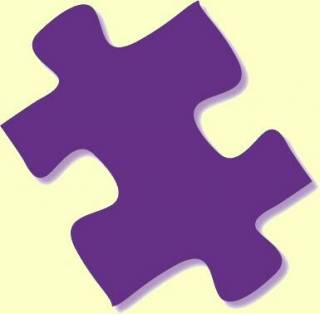Protagonists, Pluralized
By Mento 5 Comments
For the longest time I was racking my brain for this week's blog subject, with my ongoing battle with Skyrim addiction not exactly helping. After watching the recently subbed Game Center CX episode on DeceasedCrab-bait Legacy of the Wizard, it occurs to me that both it and the game I've been playing this week (Assassin's Creed Revelations) use multiple protagonists in completely different ways. Then I got to thinking about the way different games have utilized the separate talents and attitudes of a roster of playable characters, rather than having a constant, singular main character.
For the most part, players are given multiple characters to choose from as a way of personalizing their experience, choosing a character that benefits their playstyle or for some lesser cosmetic preference depending on the complexity of the game and its cast. Replacing - or sometimes including in tandem with - the usual character creators, players can choose from a selection of pre-made characters with their own backstories and personalities at the expense of a more in-depth customization process. In the Fighter genre, the playthrough is strongly defined by that initial choice of character - there's a huge difference between playing as Zangief and playing as Chun-Li, for example, and the assortment of opponents you face can be dependent on character choice as well.
Protagonists as narrative jigsaw pieces

So the first really interesting use of having more than one main character is one I observed through playing Assassin's Creed: Revelations. Like usual, present-day Desmond Miles is reliving the memories of a familiar-looking ancestor to piece together a mystery that crosses a large expanse of time. Revelations' explicit purpose is to finish reviewing the lives of former ancestors Altair Ibn La-Ahad and Ezio Auditore da Firenze both, paving the way for new characters in games to come. While locating a library under what used to be the Assassin Order's stronghold Masyaf, Ezio comes across several discs made with the same ancient technology as the Apple of Eden that allows him to relive Altair's memories in much the same way Desmond can with the Animus. As the events of the game unfold, both those characters are able to provide absolutely every piece of info they're ever going to about the overarching Assassin's Creed storyline about an extinct ancient civilization and the recurring (and now imminent) global disaster that finished them off, and can thus be detached from Desmond's mind before he croaks from some Animus-related condition that's been at the forefront of Desmond's journey and that of Animus predecessor Subject 16. It's established early on in the game's story that Desmond's near-death ailment can be fixed by seeking closure on the lives of his previous hosts, in much the same way the continued life of the franchise is dependent on finally wrapping up any loose threads with those two and moving on already.
While the Assassin's Creed series has always been about piecing together the truth about the world and the hidden Templar vs. Assassin conflict from the perspectives of multiple protagonists, it's all the more emphasized here, with all three protagonists getting some heavy backstory. There are plenty of other games that allow the player to piece together a fuller story by playing each character involved too: The Forbidden Siren games follow a group of survivors each with their own agendas for being there, their own plans of escaping the catastrophe going on around them and their own eventual demises more commonly than not. Folklore requires that the player complete both main characters' interlinking story paths before they converge at a later chapter. Odin Sphere, Eternal Darkness and Heavy Rain are more examples of this sort of narrative feature, while I'm still brainstorming.
Protagonists as cogs working together

A considerable number of puzzle games require the disparate talents of more than one character to solve environmental obstacles in order to proceed. This is most pronounced in co-op games specifically configured for two or more people, such as Portal 2's robotic buds, Four Swords' four Links or Army of Two's bro-ish pair of mercs. This is more in line with the mechanical nature of video games, in conjunction with the narrative nature above.The single player variants tend to come in two types, however: The first being the team-based games where the player can constantly switch between characters on the fly and use their abilities in tandem to solve puzzles. This is the case with the older point-and-click series Gobliiins, cartoonish platformer The Lost Vikings, dystopian action-puzzle game Project Eden, the excellent Trine and its upcoming sequel, and many others.
The other instance is that of switching characters at hubs and entering worlds that are subtly changed by the character you choose. Rather than switching on the fly and using their skills co-operatively, each character has their own objectives to fulfil on their own. Though very much a series of solo efforts, there is usually a unifying purpose at the end of all this, where all the major characters you've spent time with banding together to defeat a greater evil. Games with this format include Rare platformer Donkey Kong 64 and Falcom's Legacy of the Wizard (otherwise known as Dragon Slayer IV).
Protagonists as a device to be played around with
Of course, video games aren't the only form of fiction to play around with the concept of the protagonist, or more specifically the character with which the consumer shares a viewpoint, and what that necessarily means for the big picture. Protagonist-switching novels like the A Song of Ice & Fire will often kill off whomever the viewpoint character happens to be for any given chapter. However, once you factor in how important the participation of the player is for any interactive fiction, the protagonist becomes a much more vital element, and thus becomes something that's more fun to co-opt or subvert in some way.Metal Gear Solid 2, infamously, gave players the new character of Raiden to play as, in a plot that didn't seem to connect to the first game or any others in the series. While Solid Snake would eventually show up, the switch to Raiden and the way Hideo Kojima played around with that "main character" trope is indicative of his overall obsession with subverting traditional story elements of both fiction in general and that of video games specifically.
Other games will allow you to believe you're playing the game's main character before switching to a completely new main, either killing the previous or severely downgrading their relevance to the plot. It can be grating when done poorly, though, or in games where there's a significant amount of levelling such as the SaGa RPGs. At least from my experience anyway. It's also a major spoiler for the many games it occurs in, so I'd better stop talking about it. So instead, here's some comics?
BONUS COMICS!
Assassin's Creed: Revelations

Skyrim

